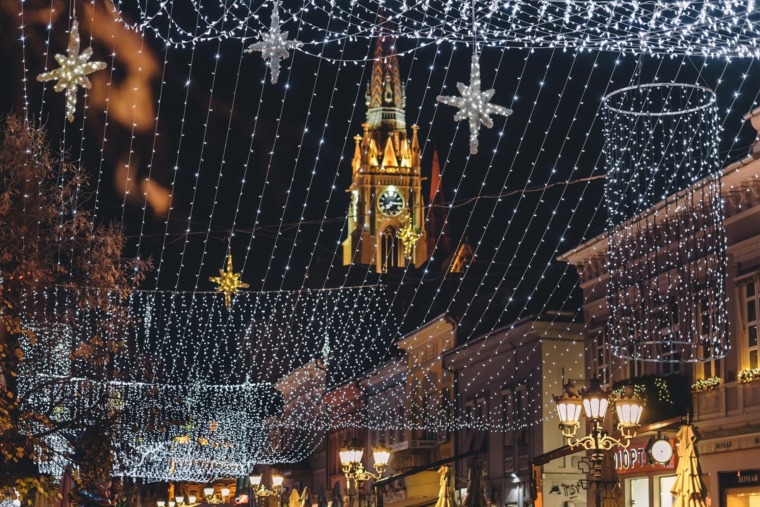

If you would like to get to know the image and work of Marshal Josip Broz Tito, still a mysterious lifetime president of Yugoslavia, or feel the atmosphere of a significant historical and cultural époque in the former Yugoslavia, head for Dedinje and Senjak, the most luxurious quarters of Belgrade.
Today, just like decades ago, the central part of Dedinje belongs to Marshal Josip Broz Tito, who, according to his desire, was buried in the House of Flowers, a part of the complex of the Museum of Yugoslav History, in Botićeva street, number 6.
The complex, besides the House of Flowers, includes the Museum May 25th and the Old Museum. The Museum of Yugoslav History has 23 valuable collections that include gifts that Tito received as one of the most renowned statesmen of the time.
The special attraction of the Museum of Yugoslav History is the unusual collection of “Youth Batons”. Each May 25th – the Youth Day and Tito’s birthday, young men and women would carry these batons across Yugoslavia to present them to Marshal at the final ceremony at the stadium of “JNA” (Yugoslav National Army). This tradition continued till 1980 the year of Marshal’s death.
If you would like to see this building with the longest tradition in sports in the former Yugoslavia and feel a piece of that atmosphere of Youth Day rallies, just go several hundred meters down the street from the Museum of Yugoslav History. Today it is a home of Partizan, one of two biggest football clubs in Serbia. Visits to the stadium in Humska 1 Street, and to the museum with trophies and photos displaying the history of the club should be announced in advance on e-mail: football@partizan.rs.
If you prefer spending your time on art, and you fancy a walk through the luxurious part of Belgrade with villas and lush greenery, you can visit the Legacy-Gallery of Milica Zorić and Rodoljub Čolaković, the former Yugoslav official, in Teodora Drajzera street, no 2.
The Gallery opened in December 1980 displays a collection of 92 works by top artists from the former Yugoslavia, as well as the collection of antique furniture, oriental carpets, glass and porcelain that complements the interior of the Gallery.
The Legacy of Petar Lubarda in Ilinčićeva 2 st. is not too far from there. In the house of this great painter you can see numerous works by the author, including the painting “Čovek i zveri” (Man and beasts) dedicated to the city of Belgrade which symbolically represents all temptations that the capital of Serbia faced during centuries.
Either route you decide for, you can sum up impressions at the restaurant “La Costa Nova” where you can also try some of Tito’s favorite dishes. At the address Vojvode Putnika Boulevard no. 36 you will be welcomed by warmhearted owner of the restaurant who, during his long experience, has also had the opportunity to get familiar with Tito’s cookbook and furthermore he was one of the bearers of the last “Youth Baton”. That is the reason why he will be glad to prepare you some “Tito’s specialties“ that can only be found here.
Once you are in this neighborhood, you shouldn’t miss the opportunity to visit the Museum of African Art in Andre Nikolića 14 street. The Museum was founded at the time when Yugoslavia was one of the most significant members of the Non-Aligned Movement, which first official conference was organized mostly thanks to Josip Broz Tito. Here visitors can see the permanent display of valuable historic and cultural artifacts originating from Africa, as well as pieces of contemporary African art.
After an eventful day you can visit Lava bar in Kneza Miloša 77 street where you can enjoy some of the best pop and rock parties in the city. Relaxed atmosphere that makes everyone dance and have a great time will surely make your evening unforgettable. The reservations are necessary so make sure that you have made reservations on time at number +381 11 3610525.
Related Articles


10 Dishes That Must Be on a Serbian New Year’s Table
December 24, 2025
Tourist Holiday Guide to Serbia: Tips, Traditions & What to Expect
December 20, 2025
Snow-Free Serbia Travel Ideas for 2026
December 17, 2025





